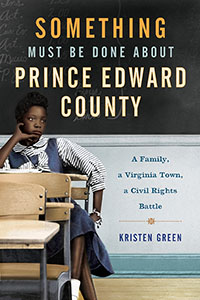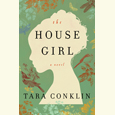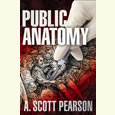A Painful History Hidden in Plain Sight
Kristen Green’s new memoir tells the shameful story of Prince Edward County’s response to integration
By May 1959, the school board of Prince Edward County, Virginia, had spent five years fighting the Supreme Court’s order to desegregate the nation’s schools. That spring, when the Fourth Circuit Court of Appeals ruled that the county had to begin to integrate its schools, it briefly looked as though time had finally run out. But then the county did something that not even the deepest of Deep South communities had been willing to do: it shut down its own schools.
 In their place sprang up nominally private, all-white academies. The parents of Prince Edward’s 1,700 black students were left to scramble for alternatives; many of the children simply stayed home. Prince Edward’s schools did not reopen until 1964, and when they did only eight of the 1,500 students were white. Even today, the county’s public schools are fifty-seven percent black, while many of the private academies remain local fixtures, their histories forgotten or papered over.
In their place sprang up nominally private, all-white academies. The parents of Prince Edward’s 1,700 black students were left to scramble for alternatives; many of the children simply stayed home. Prince Edward’s schools did not reopen until 1964, and when they did only eight of the 1,500 students were white. Even today, the county’s public schools are fifty-seven percent black, while many of the private academies remain local fixtures, their histories forgotten or papered over.
In her book, Something Must Be Done About Prince Edward County, Kristen Green tells this horrible, forgotten story as an insider: not only did she grow up in Prince Edward County and attend a private, post-Brown academy there, but her own grandfather helped to orchestrate the county’s Hail Mary plan to protect segregation.
The plan, hatched in the months after the Brown decision, called for the creation of a private foundation, which would funnel donations and whatever public money it could find into the creation of a string of independent, white-only academies. More than $180,000 was raised by the summer of 1955, when the county got a reprieve, of sorts, after the Supreme Court ruled in its “Brown II” decision that state and local governments could in effect set their own pace for desegregation. When the circuit court’s ruling came down in 1959, local white leaders put their plan into effect, and the next day the local school doors were chained shut.
Almost immediately, private schools popped up to accommodate the displaced white students. The schools charged tuition, while also offering financial assistance to white families who couldn’t afford it. Blacks were left out completely. Though some found schooling options with relatives or friends outside the county, most were out of luck: according to Green, the illiteracy rate for blacks ages five to twenty-two went from three percent before the closure to twenty-three percent by the mid-1960s.
This being genteel Virginia, the county school board tempered its segregation efforts with appeals to racial accord; in announcing the closures, it said its actions “should not bring about conditions which would most certainly result in further racial tension and which might result in violence.” And there was no violence—which is one reason, Green suspects, the decision didn’t get the national attention it deserved. There were demonstrations, though: protest marches, along with selective buying campaigns, and they did attract attention. In January 1963 Robert Kennedy called Prince Edward County “a disgrace to our country.” Through Kennedy, the Department of Justice worked out a temporary solution, a free private school that accepted both black and white students. Finally, in May 1964, the Supreme Court found the county’s school-closure policy unconstitutional, and the chains came off the school doors.
 Green, a journalist in Richmond who has previously worked for The San Diego Union-Tribune and The Boston Globe, paints a complex but damning portrait of her slice of Virginia—a state whose white leaders eschewed the overt racial violence of the Deep South but was also the birthplace of “massive resistance” and the home base for such hardcore segregationists as Senator Harry Flood Byrd and Representative Howard K. Smith.
Green, a journalist in Richmond who has previously worked for The San Diego Union-Tribune and The Boston Globe, paints a complex but damning portrait of her slice of Virginia—a state whose white leaders eschewed the overt racial violence of the Deep South but was also the birthplace of “massive resistance” and the home base for such hardcore segregationists as Senator Harry Flood Byrd and Representative Howard K. Smith.
It is instructive to read Green’s book alongside another recent book about the post-Brown years in the South: Harper Lee’s Go Set a Watchman. The “new” Atticus Finch in that book, a member of the local white Citizens Council and a staunch opponent of school integration, would have fit in perfectly among the upstanding men who plotted the closure of Prince Edward’s schools. And Green struggles, just as Jean Louise Finch does in Watchman, with the fact that the adults she grew up respecting and loving were also the purveyors of a morally noxious worldview, wrapped up in a belief that segregation was in the best interests of everyone, white and black. “I am the segregation academy,” Green writes. “I am the grandchild of prejudiced but loving grandparents.”
Something Must Be Done is not straight history; at least a third of it focuses on Green’s contemporary life, her family, and her first steps toward understanding the school-closure story. In another context such an approach might come across as navel-gazing, but here it’s absolutely essential. Green wants to tell the story of the school closures, but even more importantly she wants to show what they meant, and how they were remembered—and forgotten.
But if the country has forgotten, the county has not. Whites and blacks continue to wrestle with its past. There is a new civil-rights museum, and in 2008 the County Board of Supervisors passed a resolution expressing “regret” for the school closures. Race relations have improved, interracial marriages are no longer controversial, and, at least in Green’s eyes, everyday life in the county is more integrated than it was when she was a child.
Still, as Green points out, progress can also mean permitting whites to let themselves off the hook while demanding that blacks move on. “The apologies issued to black students over the years have never been enough,” she writes. “It is asking too much of black residents, particularly former students shut out of school, to move past the pain.”
Green is in her early forties, which means she was a child during the post-civil-rights era of the late 1970s through the early ’90s, when suburbanization and the Republican realignment had mostly completed their sweep across the white South, leaving in their wake a racial amnesia that accepted the basic tenets of racial equality but refused to examine the legacy of so many decades spent resisting it. It was also an era when conservative politics took aim at the advances of the civil-rights era, and began to push back, knowing that many Americans wouldn’t notice, or care.
“During my childhood, our family rarely discussed what had happened and only in broad strokes,” Green writes. “No one mentioned that my grandfather had opposed integration. No one explained the effects of the school closure on our loyal housekeeper, her daughter, and other black residents of our county.” It was, she writes, “A painful history hidden in plain sight.”
In the history of civil rights, those decades of conservative rollback are an often-overlooked period. And yet today, as we grapple with old racial questions anew, it’s important to remember how easy it was to forget what was achieved in the 1950s and ’60s, and how fragile those advances could be—especially if no one talked about them.

Nashville native Clay Risen is the author of A Nation on Fire: America in the Wake of the King Assassination and American Whiskey, Bourbon and Rye: A Guide to the Nation’s Favorite Spirit. His new book, The Bill of the Century: The Epic Battle for the Civil Rights Act, appeared in spring 2014. He lives in New York, where he is a senior editor at The New York Times.


